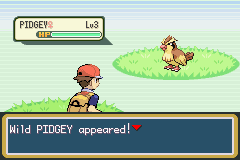The Short
Pros
- Same WarioWare concept, only now with more twisting!
- Specifically, twisting the GBA with the gyroscope included on the cart takes the place of the D-pad commands
- Another 200+ minigames that vary from "awesome" to "dumb"
- Same silliness in terms of story, progression, and gameplay
- Unlocks are easier and funner to acquire
- Adheres to the same strong formula set up in Mega Microgame$
Cons
- Some of the minigames seem virtually identical
- A few require some intense twisting that make it hard to see the screen
- Entire structure of the game is exactly the same; the only real innovation is twisting
- Some you feel would control better with a D-Pad rather than twisting
 |
| Warioware is back and weirder than ever. |
The Long
It doesn't take much to make a successful WarioWare game. Ok, it does take a lot of new microgames, but at its core WarioWare is fun when you have all the game unlocked and you blast through a random mix of them trying to see how far you can get. After a not-so-successful Gamecube offering, Nintendo returned the series to its GBA roots...with a TWIST! Rather than just serve the same game in new packaging, they added a big fat motion sensor (which also rumbles) to the bottom of the cart and made it so you twist your Game Boy Advance. Best idea ever, or stupid gimmick?
Well, it's a bit of both, but the point is that this is still an extremely fun WarioWare game, and could honestly be considered the best in the series.
 |
| Twist the GBA to shave the dude! |
There isn't much to be said about the basic gameplay that hasn't already been said in my Mega Microgame$ review. You blast through minigames that last around 5-15 seconds, quickly learning the mechanic only to be thrown into another one. The difficulty and speed ramp up the more you play, until eventually you screw up four times and that's it. It's a fun rush (especially since there are so many games and they are all weird) and perfect for someone who wants constant change and gratification.
So the main "hook" from Twisted is the twisting: the motion control on the bottom of the cart. Basically it only senses you tilting it left and right (it isn't a true gyroscope like one that's in the iPhones) and, while not particularly accurate for menu navigation, does well enough in minigames that require minimum precision.
 |
| Not great for menu navigation, great for minigames. |
Essentially, Twisted just replaces all d-pad movements (left and right) with twisting, as the d-pad is completely unused in this game (including the menus). The minigames have been slightly adapted to better fit this (most are slightly easier, but that becomes moot when you play on the third level of difficulty) and the game really gets crazy when you have to twist and press A at the same time. It's a good way to mix up what they already did, even if it isn't that dramatic an improvement.
So how does it play? I've been a bit lukewarm in my review so far, but I can say that this game absolutely invokes the same frantic, addicting formula that Mega Microgame$ has. If anything, twisting only makes the game trickier, as you have to quickly physically move the game boy for the fastest, craziest games which makes it much harder. The minigames are well adapted for the mechanic and scale very well, the story mode teaching you all the mechanics before tossing you into some hard ones.
 |
| Twist to block! |
All that aside, this game plays fantastic. The motion sensor rarely screws up (if ever, and only in the menus) and despite it being an obvious gimmick it fits the playstyle of WarioWare perfectly. So, in that regard, total success from Nintendo taking something they already had and putting a new spin (pun also intended) on it.
 |
| Avoid the bird poo! |
Graphically the game is pretty much the same as its predecessor. It doesn't quite seem to have the same weirdness of the first game (it's a bit more self-aware this time around) which loses a bit of the charm, but as a whole it works. I particularly like the 8-bit NES levels that are warped to work around the twisted mechanic.
The sound is also fantastic, though it recycles most of the sound effects from the first game. Again, if it ain't broke don't fix it, but it does all seem a bit familiar.
 |
| WARIOMAN! |
All in all, WarioWare: Twisted! is an excellent evolution of an already great formula. While it isn't quite the breath of fresh air that the first game was, it does well enough with it's fun twisting and silly microgames to merit a look if you enjoyed the first game. Fun, silly, and challenging with a TWIST?!, Twisted is absolutely worth any GBA owner's time.










































